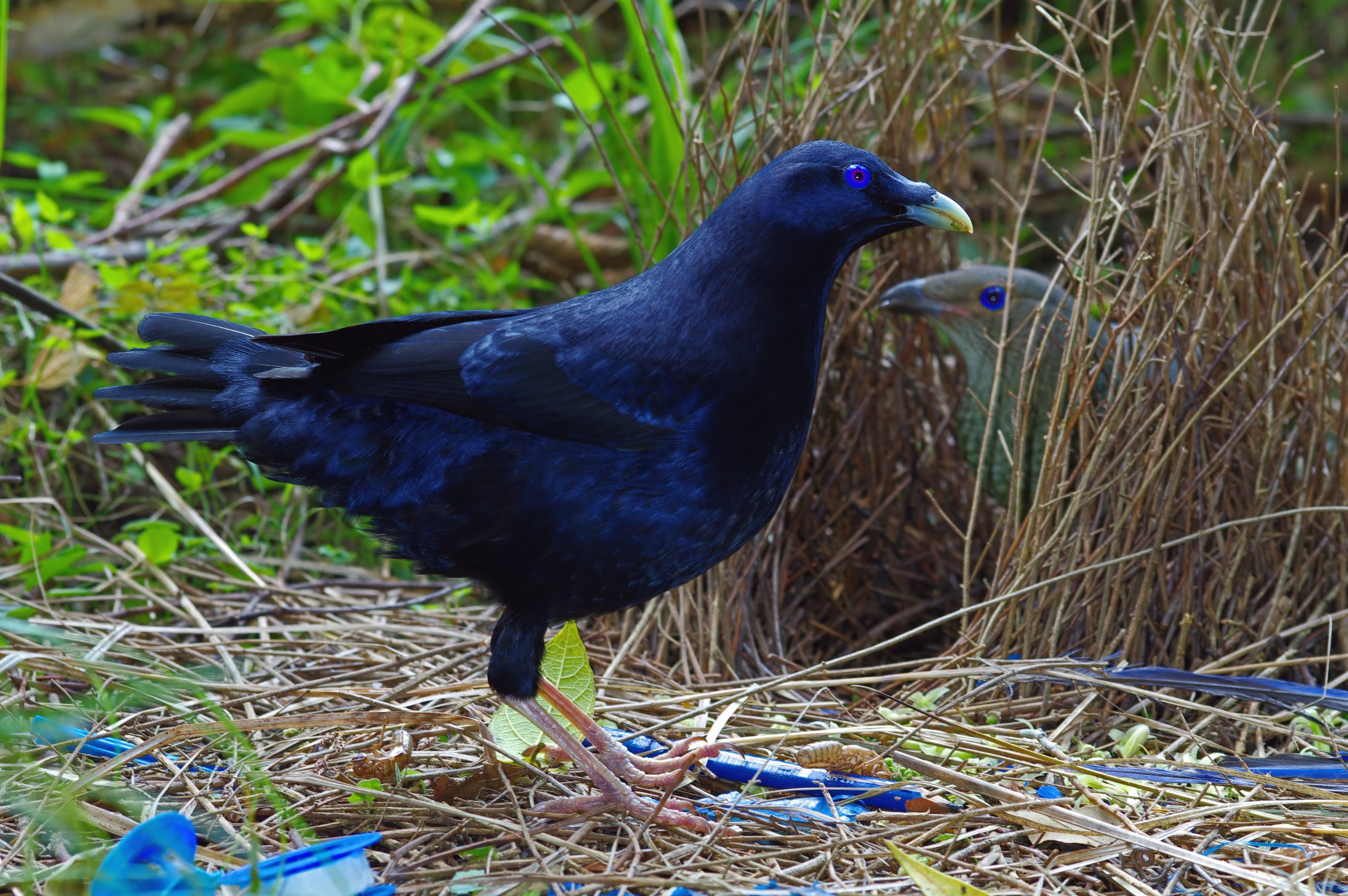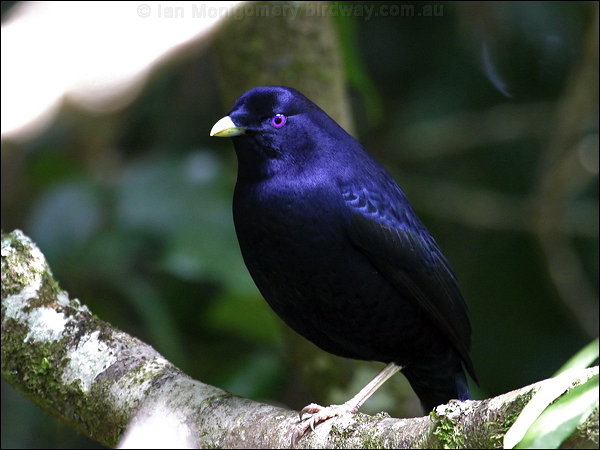
Ptilonorhynchus violaceus
TAXONOMY
Ptilonorhynchus violaceus Vieillot, 1816, Nouvelle Hollande =
Sydney, New South Wales, Australia. Two subspecies.
OTHER COMMON NAMES
English: Satin bird, satin grackle, purple satin; French: Jardinier
satinй; German: Seidenlaubenvogel; Spanish: Capulinero
Satinado.
PHYSICAL CHARACTERISTICS
13 in (33 cm); female 0.38–0.57 lb (170–258 g), male 0.38–0.64
lb (173–290 g). Iridescent black plumage with light legs and
bill. Female slightly smaller with green, gray-green, brown,
and buff coloring.
DISTRIBUTION
Eastern and southeastern Australia. P. v. violaceus: coastal zone
of southeast Australia from Otway Range, immediately east
of Melbourne, east and North to Dawes Range just south of
the Fitzroy River at Rockhampton; from sea level to 3,600 ft
(1,100 m). P. v. minor: Australian wet tropics, from Seaview-
Paluma Range north to Mount Amos near Cooktown, typically
over 1,970 ft (600 m) altitude.
HABITAT
Rainforests, with a strong preference for their edges, and adjacent
woodlands with dense sapling understory. Frequents more
open habitats when winter flocking, then frequents pastures
and urban/suburban areas.
BEHAVIOR
Males build bowers to attract females. Avenue bowers are
fairly evenly and linearly dispersed at an average of about 990
ft (300 m) apart along rainforest edges, often further apart in
rainforest patches and woodlands. Mostly bluish and greenish
yellow items are used as decorations, including flowers, fruits,
parrot feathers, snake skin, snail shells, and numerous humanmade
objects. Seasonal bower attendance commences in late
August/September and peaks during October through December.
Adult males emit advertisement vocalizations with a
clearly-whistled quoo-eeeew, various harsh notes, and vocal
mimicry.
FEEDING ECOLOGY AND DIET
Omnivorous but predominantly frugivorous. Also eats flowers,
leaves, nectar, seeds, and animals including cicadas, beetles, and
other arthropods. Forages mostly in the canopy but winter
flocks forage on the ground for pasture leaves and herbs.
REPRODUCTIVE BIOLOGY
Polygynous, with promiscuous males and exclusively female
nest attendance. Breeding occurs August/September through
February. Egg laying peaks in November and December. Typically
builds open cup nest in trees or bushes, but also in vine
tangles and mistletoe, at 6.6–131 ft (2–40 m) above ground.
Nests are composed of a shallow saucer of sticks and twigs and
an egg-cup lining of green and dry leaves (mostly of Eucalyptus
and Acacia). One to three colored and blotched, rarely vermiculated,
eggs are laid. Incubation is 21–22 days and nestling period
is 17–21 days.
CONSERVATION STATUS
Not threatened. A common to reasonably abundant bird in remaining
HABITAT
but has lost habitat because of human land use.
SIGNIFICANCE TO HUMANS
Ornithological and popular literature contains numerous stories
of males removing jewelry, keys, and other items from homes,
vehicles, camps, etc. to decorate bowers
Other popular Animals
Photo Gallery of - Satin bowerbird




 Animalia Life
Animalia Life